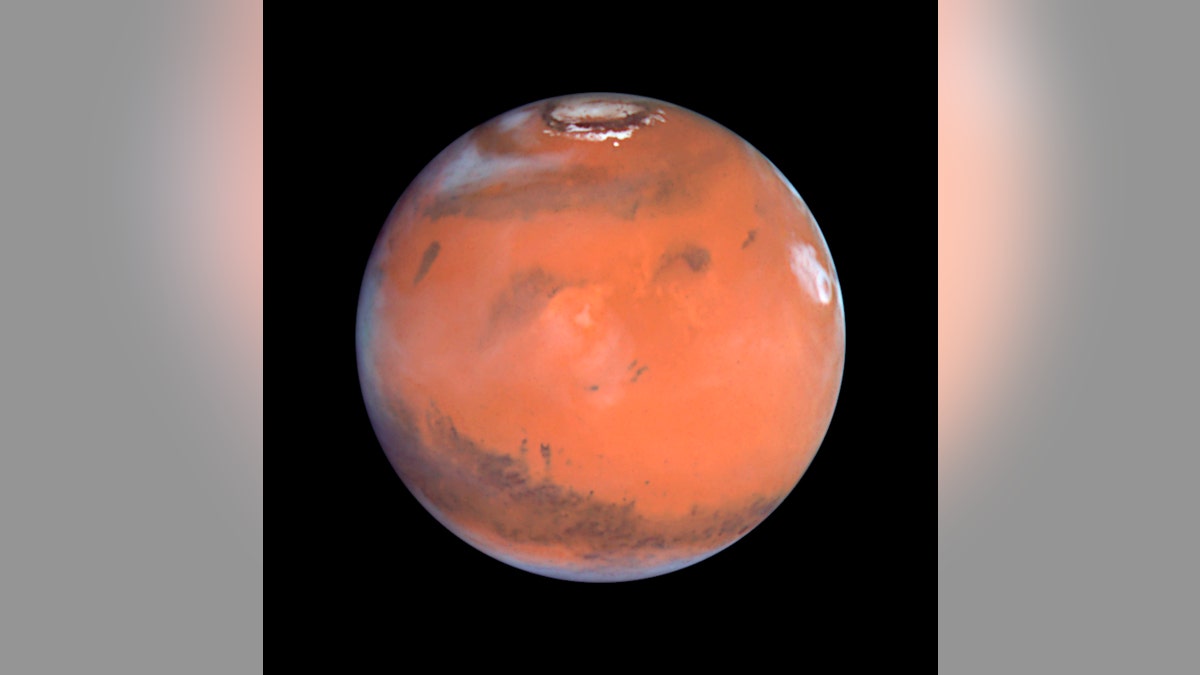
This 1999 Hubble telescope image shows Mars when Mars was 54 million miles from Earth. (REUTERS/NASA/Handout)
Astronomers believe fragments of a mysterious lost world are locked in orbit around Mars.
This ancient planet may have smashed into the Martian surface during the early days of the solar system, creating a series of nine asteroids called the Trojans.
“The Trojans are really a relic from the early life of the solar system, when the planets were still forming,” Apostolos Christou from the Armagh Observatory and Planetarium told New Scientist.
Astronomers now believe the Martian Trojans are all made up of the same material – suggesting they once belonged to the same planet.
'ANCIENT TREE STUMP' SPOTTED ON MARS?
Asteroids which orbit planets are called Trojans.
They have been around since the birth of the solar system, when the distribution of planets, asteroids and comets was very different from today.
About 6,000 Trojans have been found in the orbit of Jupiter and about 10 in Neptune’s.
Mars is so far the only terrestrial planet known to have Trojan companions which orbit regularly.
NASA'S CURIOSITY ROVER SPOTS PURPLE ROCKS ON MARS
The first Mars Trojan was discovered more than 25 years ago at L5 and named “Eureka” in reference to the famous exclamation by Ancient Greek mathematician Archimedes.
It has nine of these satellites, but they all have a mysteriously different structure to every other space rock in the solar system.
The asteroids are made up of olivine, which is a mineral that forms in larger objects that suffered super high pressures and temperatures.
The scientists, lead by Apostolos Christou and Galin Borisov at the Armagh Observatory and Planetarium in Northern Ireland, claim this is evidence that the rocks are the remains of a lost planet.
FOR THE LATEST TECH FEATURES FOLLOW FOX NEWS TECH ON FACEBOOK
The ancient world could even have impacted on our own civilisation, Christou revealed.
He said: “Our findings suggest that such material has participated in the formation of Mars and perhaps its planetary neighbour, our own Earth.”
It follows a new bombshell theory that life on Mars may have been forced underground after a catastrophic disaster turned the Red Planet into a “frigid desert”.
This article originally appeared on The Sun.




















